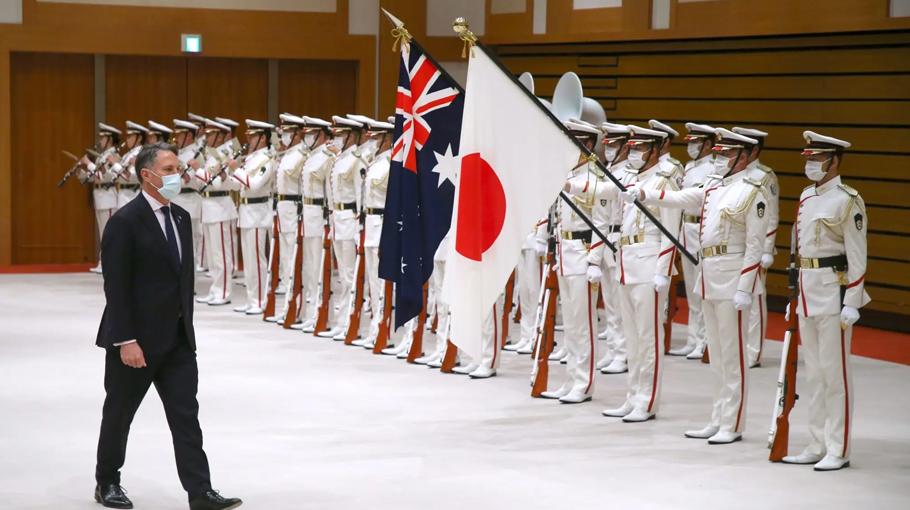Now is the time for Japan to join AUKUS

On the Indo-Pacific Tilt, the UK House of Commons Foreign Affairs Committee stated that there would be greater technology and security benefits if Japan joined its Strand B, or Pillar 2, cooperation in the development of advanced military technologies and increased interoperability between AUKUS members’ armed forces.
The committee’s report calls for the United Kingdom to propose to Australia and the United States that Japan, along with South Korea, participate in an AUKUS technical defence cooperation agreement focused solely on Strand B activities.
Strand B designates cooperation in advanced technology areas, including undersea capabilities, quantum technologies, artificial intelligence, advanced cyber, hypersonic weapons, electronic warfare, innovation and information sharing.
These advanced capabilities are critical in reinforcing the integrated deterrence capabilities of the United States’ Indo-Pacific allies, including Japan.
Since Japan already has a defence cooperation framework for joint research and development with the United States, the United Kingdom, and Australia, there is a foundation for AUKUS–Japan cooperation. But cooperation based on the current frameworks is project-based, with an emphasis on basic technologies rather than a list of priority capabilities, unlike AUKUS. For example, most of the joint research with the United States involves technologies directly related to equipment, such as next-generation amphibious technology and modular hybrid electric drive vehicle systems. Based on this background, Japan could considerably benefit from participating in AUKUS Pillar 2.
The Japanese government stated in the National Defense Strategy 2022 that leveraging cutting-edge technologies for defence has become critical. Japan, which has high technological capabilities, needs to cooperate with its allies and mobilise their technological capabilities to prepare for a long-term race for technological leadership. Because advantages in critical and emerging technologies covered by Pillar 2 of AUKUS will directly translate into military advantages, having access to these technologies will deter potential adversaries in the Indo-Pacific.
Given Japan’s declining economic power, its future science and technology investment will likely also decline. Japan can acquire critical and emerging technologies more efficiently by closely collaborating with allies and partners. Cooperation through an expanded AUKUS Pillar 2 agreement would allow its members to complement each other’s capability gaps and leverage economies of scale.
Most importantly, it will promote the internationalisation of Japan’s defence industry. For a long time, the Japanese defence industry’s only client was the Japanese Ministry of Defense and Self-Defense Forces. But they are undergoing major changes, relaxing the restrictions on defence equipment transfer and promoting exports. Strengthening ties between the defence industries of Japan and AUKUS members is a good opportunity to improve the Japanese industry’s competitiveness. In Japan, investment in critical and emerging technologies has been driven by civilian usage. In 2020, defence-related procurement from domestic manufacturers made up less than 1 percent of Japan’s total industrial production value.
The Japanese defence industry must become more internationally oriented. Although joint research and development takes time, the expanded AUKUS group can create an opportunity for the Japanese defence manufacturers to learn the marketing and sales know-how of defence equipment from AUKUS partners.
But before it can join AUKUS, there are challenges Japan needs to overcome.
The most critical issue is the lack of an adequate security clearance system. The Act on the Protection of Specially Designated Secrets, the only existing law on information security in Japan, limits the scope of information that can be classified as state secrets to four areas: diplomacy, defence, prevention of espionage, and prevention of terrorism. It does not cover information in economic and technological fields, and without a security clearance system in these areas, Japanese manufacturers will struggle to access classified information in joint developments. Japan needs a security clearance system before it joins AUKUS.
Additionally, Japan is striving to become a major arms exporter like the United States and the United Kingdom, so there are concerns about potential conflicts of interest. The heart of AUKUS is reminiscent of Japan’s efforts to sell its conventionally-powered submarines in 2015. But considering the lead time to acquire effective deterrence capabilities in the critical theatre of the Indo-Pacific, this is not the time for commercial clashes. Japan should accept the division of labour within the extended AUKUS framework.
Given the military-oriented nature of AUKUS, Japan joining AUKUS would signal to China that it is part of the ‘integrated deterrence’ network the United States promotes. Considering that China, Japan, and South Korea are working together to revitalise the dialogue channel through the Japan–China–South Korea trilateral summit, policymakers in Tokyo may feel that the timing is inappropriate.
But the security environment in East Asia is more dire than ever, and technology implementation takes years, especially the critical and emerging technologies that define future victories. The United States has also expressed a positive attitude toward the expansion of AUKUS’ Pillar 2 membership. Japan cannot afford to delay their efforts to strengthen their defence industrial base with these technologies. Now is the time to accelerate discussions on Japan’s participation in AUKUS.
Rena Sasaki is a PhD student at School of Advanced International Studies, Johns Hopkins University and a Fellow of the Pacific Forum’s Next Generation Young Leaders Program.
Source: East Asia Forum




